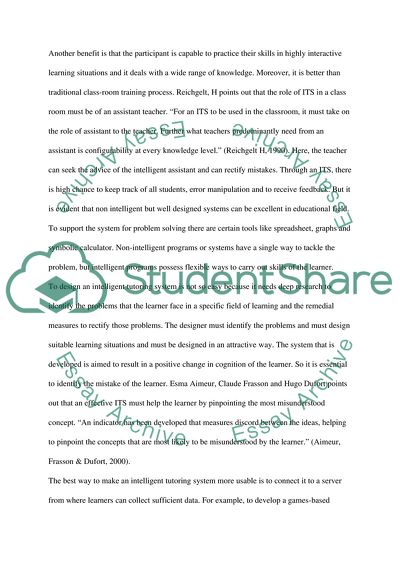Cite this document
(Intelligent Tutoring Systems Case Study Example | Topics and Well Written Essays - 2183 words, n.d.)
Intelligent Tutoring Systems Case Study Example | Topics and Well Written Essays - 2183 words. Retrieved from https://studentshare.org/education/1717105-intelligent-tutoring-system-report
Intelligent Tutoring Systems Case Study Example | Topics and Well Written Essays - 2183 words. Retrieved from https://studentshare.org/education/1717105-intelligent-tutoring-system-report
(Intelligent Tutoring Systems Case Study Example | Topics and Well Written Essays - 2183 Words)
Intelligent Tutoring Systems Case Study Example | Topics and Well Written Essays - 2183 Words. https://studentshare.org/education/1717105-intelligent-tutoring-system-report.
Intelligent Tutoring Systems Case Study Example | Topics and Well Written Essays - 2183 Words. https://studentshare.org/education/1717105-intelligent-tutoring-system-report.
“Intelligent Tutoring Systems Case Study Example | Topics and Well Written Essays - 2183 Words”, n.d. https://studentshare.org/education/1717105-intelligent-tutoring-system-report.


